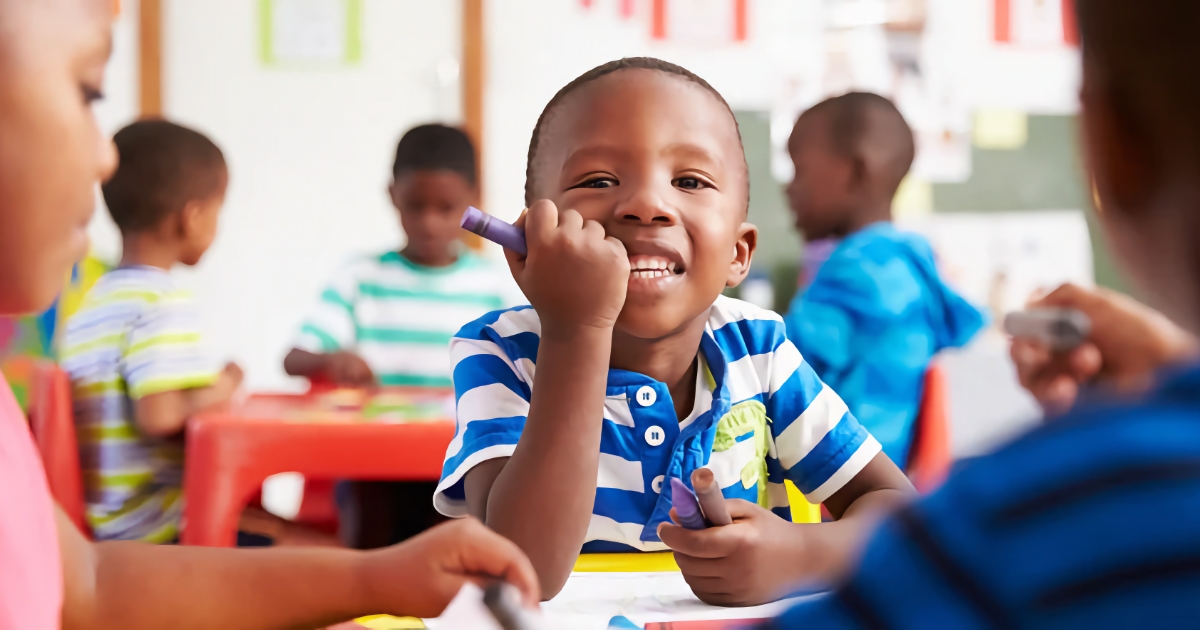
Since urging my preschool to eliminate Columbus Day from the school calendar, I continuously contemplate how to teach about Native Americans, and especially Thanksgiving, in the most developmentally appropriate way. I’ve ordered board books, folk tales and informational texts, but it always feels superficial. A curriculum that went beyond the uses of foods and plants, housing and music was lacking.
I support the growing number of teachers who share the truth about genocide, but how does that translate into an appropriate lesson for three-year-old children?
As a preschool teacher, we often teach subjects covertly, without introducing adult-level content that would be developmentally inaccessible to our students. The same goes for Thanksgiving. As I learned recently at an UnColumbus Day event in Philadelphia, “When it comes to Thanksgiving or to myths of Columbus, don’t teach them [young children] falsehoods that they will have to later unlearn.” When asked how we can bring back what we have learned into our classrooms, my thoughts went straight to the adults in my students’ lives.
If teachers and families are prepared to debunk myths, call out the fiction that has been embedded in American textbooks and focus on true Indigenous history, young children will hopefully be exempt from learning distortions in the first place.
How can I explain the perspective of Indigenous people to young children without centering the European narrative and victimizing Indigenous peoples?
I remembered the sample lesson at the workshop where an elementary teacher concentrated on perspective-taking and defining discovery, encounter and conflict before even bringing up Columbus or colonialism. I thought about my best tool for engaging my students in a conversation about social issues: puppets. Every Friday my co-teacher and I use puppets to dramatize a problem we see in the classroom for the children to solve. Because the focus is on the puppets, my students can address a problem, consider different perspectives and build on each other’s ideas without focusing unwanted attention on specific students.
I began the dialogue as Piper, the sea lion, walking upon a beautiful shell on a beach. Piper stated how pretty it is and claimed, “I discovered this shell and I want it!” Little did Piper know that Shelly the hermit crab lived inside. Piper ignored that fact and claimed the shell as her property. I tasked my students with answering the questions “What should Shelly do?” and “Can Piper take Shelly’s shell?” The circle erupted with “no’s” and “that’s not nice.”
V: Her is living in there!
R: It’s attached to her.
L: Piper can play with Shelly.
K: Shelly is stuck to the shell, inside the shell, so Piper can’t take it.
Piper: But I want it. I will make her get out.
L: Maybe they can play together.
Piper: Sure we can play together, but I’m still taking that shell.
J: Shelly and Piper can share the shell.
Piper: But I want it, I don’t want to share. It’s pretty and it’s mine.
L: Maybe they can take turns.
H: Ask ‘how many minutes?'
E: Maybe they can make some space.
Piper: But I want it. I discovered it.
K: Maybe they can have the shell together.
Piper: But I discovered it and it’s mine.
I jumped out of my puppet role and back into teacher mode. I asked “Should Shelly get out of her shell just because Piper wants it? Is that fair?”
At a school where compromise is valued, I wanted to push my students to recognize instances where injustice can’t be solved by sharing. The third goal of Anti-Bias Education is “Each child will increasingly recognize unfairness, have language to describe unfairness and understand that unfairness hurts.” My students eventually reached the point where Piper just had to find an alternative solution.
T: Maybe Piper can find another shell.
R: Maybe she can buy a shell.
M: But Piper doesn’t have any hands!
C: We could make one for Piper.
The class unanimously decided it was not fair for Piper to claim something that already belonged to someone else. While the children had a plethora of ideas on how both Piper and Shelly could be satisfied, eventually my students agreed that taking a home that belonged to someone else was unacceptable. They demonstrated their ability to be objective and work through a problem by thinking about many possibilities. I hope they continue to develop these skills as well as a social justice lens, so they can analyze and call out the dominant way of teaching European colonization when introduced in the future.
When working with young children, the exploration of feelings and values builds empathy, perspective-taking, and problem-solving skills. Instead of pulling out the globe, listing dates and sharing horrifying statistics, we examined the problem at its core.
Makai Kellogg is an anti-bias early childhood educator and equity and diversity coordinator at School for Friends in Washington, D.C. She completed her master's degree in early childhood education from Trinity Washington University in 2010. Makai serves as an advisory board member of the D.C. Area Educators for Social Justice. You can read Makai’s blogs at www.makaisecee.wordpress.com.
The fight for educational equity has never been just about schools. The real North Star for this work is providing opportunities for each child to thrive into adulthood. This means that our advocacy...
Your donation will support the work we do at brightbeam to shine a light on the voices who challenge decision makers to provide the learning opportunities all children need to thrive.
Ed Post is the flagship website platform of brightbeam, a 501(c3) network of education activists and influencers demanding a better education and a brighter future for every child.
© 2020–2024 brightbeam. All rights reserved.